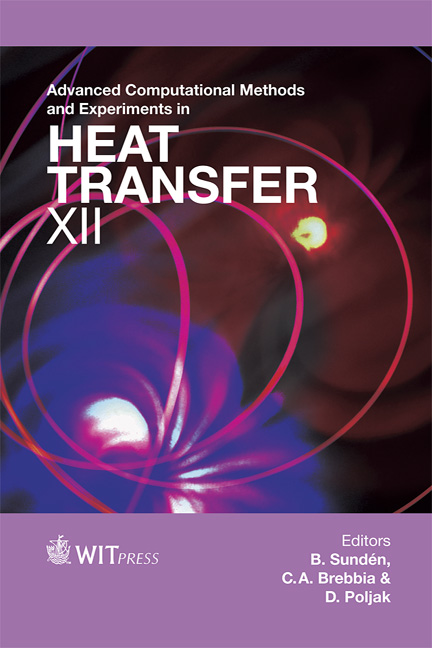Computational Modelling And Experimental Verification Of The Effective Thermal Conductivity Of Hollow Bricks
Price
Free (open access)
Transaction
Volume
75
Pages
11
Page Range
293 - 303
Published
2012
Size
1,208 kb
Paper DOI
10.2495/HT120251
Copyright
WIT Press
Author(s)
J. Kočí, J. Maděra, L. Fiala & R. Černý
Abstract
The effective thermal conductivity of hollow brick blocks filled with different insulation materials is analyzed using a combination of experimental and computational approaches. In the experimental part, thermal properties of brick body, mineral wool and expanded polystyrene are measured and a semi-scale experiment is performed to determine heat fluxes and temperature distributions across the brick. Based on the semi-scale experimental results, computer simulations are carried out and the thermal parameters of the materials filling the brick cavities are optimized. Finally, the effective thermal conductivity of hollow brick block is determined. Keywords: hollow brick block, computer simulation, polystyrene, mineral wool, filling, optimisation. 1 Introduction Reducing energy consumption and eliminating wastage are among the main goals of the European Union (EU). EU support for improving energy efficiency will prove decisive for competitiveness, security of supply and for meeting the commitments on climate change made under the Kyoto protocol. There is significant potential for reducing consumption with cost-effective measures. With 40 % of energy consumed in buildings, the EU has introduced legislation to ensure lower energy consumption. The key part of this legislation is Energy Performance of Buildings Directive (EPBD, directive 2002/91/EC) [1], which was first published in 2002. This directive required all EU countries to enhance
Keywords
hollow brick block, computer simulation, polystyrene, mineral wool, filling, optimisation.





